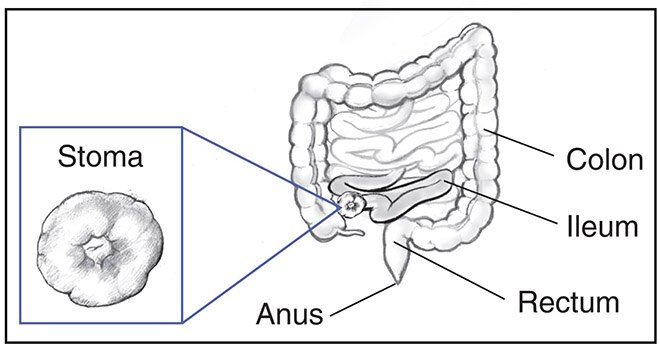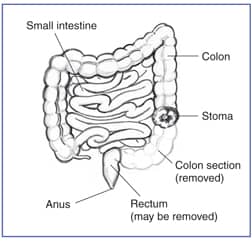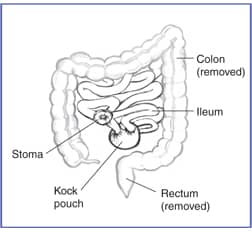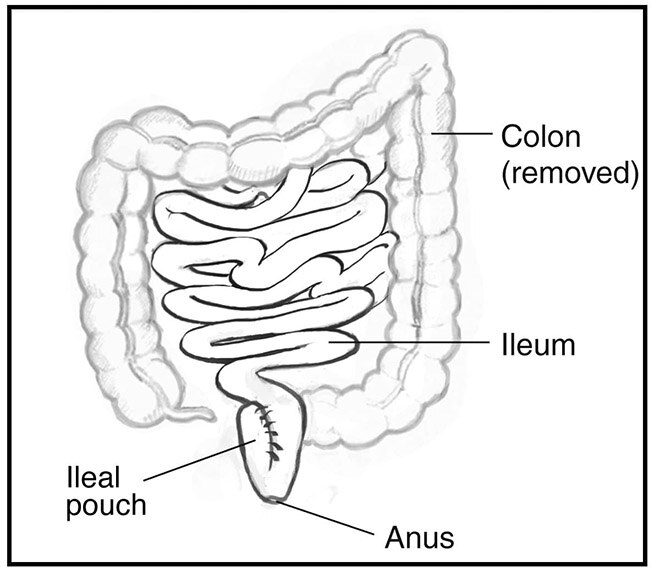Types of Ostomy Surgery of the Bowel
What are the types of ostomy surgery of the bowel?
The most common types of ostomy surgery of the bowel include ileostomy, colostomy, and continent ileostomy. Ileoanal pouch surgery is another type of bowel surgery that usually requires a temporary ileostomy. The type of surgery your doctor recommends may depend on why you need surgery and other factors.
Ileostomy and colostomy
Ileostomy and colostomy are procedures that connect the bowel to the skin on the outside of your abdomen.
- In ileostomy, surgeons bring the ileum—the end part of your small intestine—through the abdominal wall and create a stoma. The entire large intestine is bypassed or removed.
- In colostomy, surgeons bring the colon—part of your large intestine—through the abdominal wall and create a stoma. The part of your large intestine below the stoma is bypassed or removed.
Surgeons most often construct the stoma so it sticks out above the surface of the skin, which may lower the risk of stoma problems after surgery.
Your stoma may be temporary if all or part of your large intestine needs time to rest or heal after injury, infection, or surgery. When the large intestine recovers, you’ll have a second surgery to close the ostomy. After this procedure, intestinal contents will move through the intestines, and stool will pass through the anus again.
Your stoma will be permanent if your large intestine and anus are removed or cannot heal or work properly again.


Continent ileostomy
During continent ileostomy, surgeons create an internal pouch—sometimes called a Kock pouch—from the ileum and make a valve inside the pouch. Surgeons bring the end of the ileum through the abdominal wall to create a stoma next to the pouch. After surgery, the valve will prevent intestinal contents from flowing out of the stoma. You’ll drain the pouch a few times each day by inserting a tube, called a catheter, through the stoma.
Continent ileostomy is less common than other types of ostomy surgery. Your doctor may refer you to a specialized medical center where surgeons perform this type of surgery.

Ileoanal pouch surgery
Ileoanal pouch surgery—also called ileal pouch anal anastomosis, or IPAA—may be performed in one, two, or three operations. Surgeons most often complete this procedure in two operations.
- During the first operation, surgeons remove the large intestine, create a pouch from part of the ileum, and attach the pouch to the anus. Surgeons also perform an ileostomy above the pouch, creating a temporary stoma.
- If the pouch heals properly, during the second operation surgeons close the temporary ileostomy.
After ileoanal pouch surgery, stool will leave your body through the anus during bowel movements. Most people are continent, meaning they are able to control the timing of bowel movements, but the bowel movements are much looser and more frequent than with a healthy colon in place.

This content is provided as a service of the National Institute of Diabetes and Digestive and Kidney Diseases
(NIDDK), part of the National Institutes of Health. NIDDK translates and disseminates research findings to increase knowledge and understanding about health and disease among patients, health professionals, and the public. Content produced by NIDDK is carefully reviewed by NIDDK scientists and other experts.

